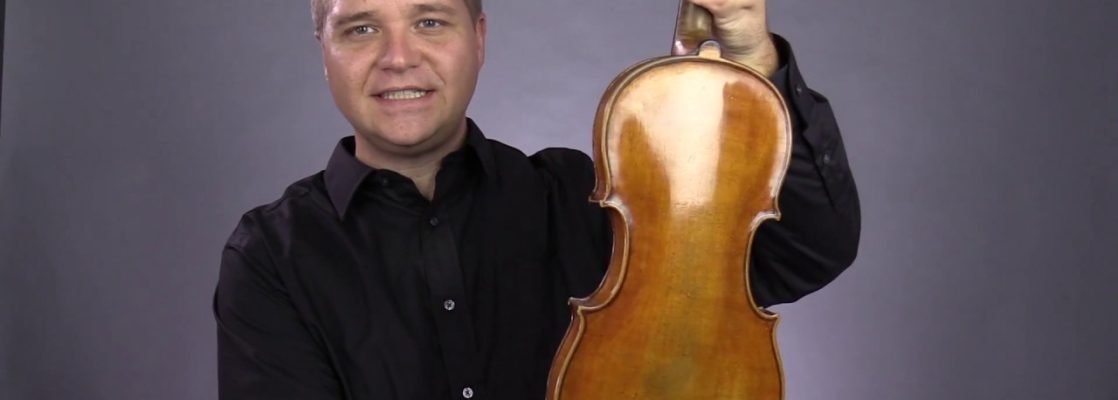A violin is not an inexpensive purchase, therefore it makes sense that you should find out the best way to properly care for your violin.
Regardless of the price, you will want to ensure you provide the beast care for your violin so that you can be sure that it will bring you years of enjoyment. A violin is actually a fragile instrument that is made up of various woods which are in a constant state of change due to humidity and temperature. There is certainly a lot pressure exerted by the violin strings themselves. By nature the instrument provides sound by way of vibration, with vibration and movement the character of the instrument will change over time. With this movement, it is inevitable that the instrument will need repair and attention over time. It is important that you know how to keep your instrument in top shape.
The first step to care for your german violin is to invest in top quality violin case. Typically damage caused to a violin is as a result of accidents when the violin has not been stored in a case.
Shopping for a top quality set of strings for your violin is worth the effort as well because inexpensive strings can place undue tension on the violin that could lead to warping, cracks or other damage to your instrument. Violin strings need to be changed at least once a year. It is a good idea to carry a spare set of stings with you.
Never leave your violin where it can accidentally be knocked over, sat on or stepped on. Be careful where you leave your violin and if you must lay it flat on a table, be cautious not to scratch it.
Keep away from extreme fluctuations in temperature and/or Humidity. Violins are particularly sensitive to changes in temperature and humidity. Use common sense and do not keep your violin close to a direct heat source or in direct sunlight. Likewise, do not keep it in an area that may be subjected to large changes in temperatures, including the basement or attic. A violin can break or fall apart in such conditions. Having humidifier in the room in cold, dry climates when the space is heated is often very beneficial.
If you’re transporting your violin and can’t avoid extreme fluctuations in temperature, it is advisable to transport it in a case and to wait a half an hour at least when the case is cold before you open it. Whatever could be accomplished to lower the risk of playing it in extremes of hot or cold ought to be considered. Do not leave your violin in the trunk of any automobile in cold or hot weather. The temperature inside the trunk of a vehicle during the summer can in fact bubble the varnish on the instrument or even melt of the glue and can actually cause the instrument to fall apart. It makes sense to warm up or cool down your car prior to putting your violin case inside the vehicle.
You should be aware of the humidity in the area where you store your violin. If you live in a dry climate, you may want to take into consideration buying a violin humidifier, like a Dampit. You can pick up a dampit at most music stores, or search online for “violin dampit”. They’re low-cost when compared with the cost of the harm that will be prevented.
When you notice damage to your violin, take it to a violin maker/repair person or luthier. A skilled luthier can assist in the care of your violin by repairing minor damage before it becomes significant and in the long run, save you money. Should you need assistance finding a luthier in your region, ask your violin teacher or check online for a luthier near you.
When you clean your instrument, use a proper high quality cleaner and polish for fine instruments, such as W.E. Hill and Sons Varnish Cleaner. (Again, search the Internet or check at your local music store). Some polishes or cleaners can actually damage the varnish on your instrument. Use the polish sparingly, but if you play regularly, clean and polish the instrument at the least monthly. Do not let rosin build up on the body underneath the strings. Rosin buildup on the violin is not a sign of a seasoned player. Once you have stopped playing, it is advisable to thoroughly wipe the instrument with a lint-free cloth to remove rosin, in addition to sweat and oils from your skin. Your sweat is even more acidic than the rosin, and it can do similar damage for the varnish on the instrument. Do not polish the bridge. If a thorough cleaning and polishing is needed, it would be advisable to take it to a professional luthier.
If you use a shoulder pad, make certain you take if off before putting your violin in the case and attempting to force the lid shut. It is basic common sense and something easily avoidable, but crushing a violin with a shoulder rest attached in the case has happened more than once.
If your instrument is going to be stored for a long time, loosen the strings just slightly, ensuring to leave the bridge in location. Place non-acidic paper under the tailpiece just in case the bridge collapses. This can prevent any damage to the finish. Make certain there’s appropriate humidity inside the violin case. Put a few mothballs in a perforated Ziploc bag inside the case away from the sides in the instrument to help stop insects from damaging the lining in the case or the bow hair.


